The Irish Republican Army (IRA) organized the escape of 38 prisoners from Maze Prison in Lisburn, Northern Ireland, which took place on September 25, 1983.
Maze Prison was seen by many as Europe’s most secure prison. It was a prison within a detention center within an army camp and believed to be completely impenetrable by any one prisoner. That was until September 1983, when the IRA successfully pulled off the largest prison escape in British and Irish History.
(If you would prefer to listen to this story, rather than read it, be sure to check out The Troubles Podcast. It's available anywhere you get your podcasts or by clicking here.)
Maze Prison was opened in 1971 after the RUC and British Army had introduced Operation Demetrius in Northern Ireland. This saw the mass arrest and internment of 350 Irish people suspected of being involved with the IRA. This policy of internment without trial would continue until 1975.
It turned out that many of those detained in this first wave of arrests had little to no connection with the IRA. The main IRA suspects had been tipped off and managed to avoid arrests and it is believed that the soldiers used wrong or out of date information when making their arrests.
The mass arrest caused a huge amount of violence and anger in the Nationalist Community, and there have been claims that the soldiers smashed their way into people's homes without warning, There were four days of clashes in which 20 civilians, two IRA members, and two British soldiers were killed.
Those who were arrested were held without trial in Nissen Huts (which are army-style barracks) at a disused Royal Air Force airfield, which became the Long Kesh Detention Centre. The huts were makeshift structures and not suitable for long term detainment. The centre was then renamed to Her Majesty’s Prison Maze, as they were situated in the township of Maze, and in 1976, eight new blocks were added to the prison, known as H Blocks, as they were all shaped like the capital letter H. These would specifically house those convicted of ’scheduled terrorist offences’. There were loyalists arrested too but they were the minority and by 1975, there were 1,981 people in the Maze, with 107 of them being loyalists. The rest were Republicans
Each block housed four self-contained prisons, called wings. The wings were then controlled in what was known as the circle, or the centre of the H. There was a 15-foot fence surrounding the entire prison and each H Block was surrounded by a 5.5-meter high concrete wall, with barbed wire at the top. All of the gates on the compound were made of solid steel and were electronically operated. It was considered impenetrable.
IRA and INLA members who were arrested viewed themselves as prisoners of war and that it was their duty to escape. They also refused to be treated as regular inmates and fought for Special Category Status which would mean they didn't have to wear uniforms or do prison work as well as some other things. Inmates in Northern Ireland had been granted this status in 1972, but it was subsequently revoked in 1976 by the Labour Party Secretary of State, Merlyn Rees
Margaret Thatcher became Prime Minister in 1979 and doubled down on the policy during a speech she delivered in Belfast on March 5, 1981:
"There is no such thing as political murder, political bombing, or political violence. There is only criminal murder, criminal bombing, and criminal violence. We will not compromise on this. There will be no political status."
October 13, 1984: Prime Minister Margaret Thatcher addressing the Tory Party Conference in Brighton. (Getty Images)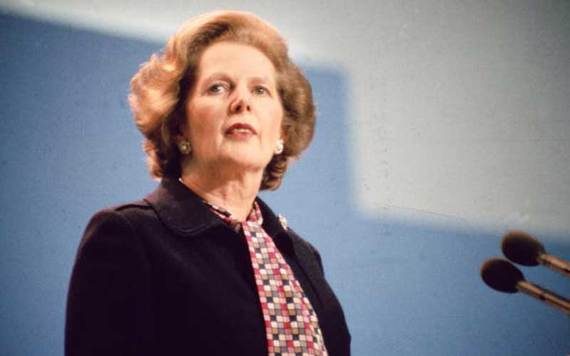
Prisoners arriving at Maze prison after March 1976, would not be granted special category status. This led to a huge outcry by Irish Republicans who were there. By 1978, nearly 300 Irish Republicans refused to wear their prison uniforms, opting to wear the blankets from their beds instead. The British Government refused to back down and the Republicans then began a dirty protest, covering the walls of their cells with excrement. Prisoner Pat McGeown described the conditions in his cell:
"There were times when you would vomit. There were times when you were so run down that you would lie for days and not do anything with the maggots crawling all over you. The rain would be coming in the window and you would be lying there with the maggots all over the place."
Outside of the Maze, the IRA Army Council began to communicate with IRA prisoners who asked them to start assassinating prison officers. Over the 5-year period that these strikes took place within the prison, 19 prison officers were killed on the outside. Then in 1981, the prisoners began a hunger strike that would see ten men losing their lives. One of them was Bobby Sands, who will be covered in a later episode.
A mural depicting Bobby Sands in the Falls Road on April 10, 2008 in Belfast, Northern Ireland. (Getty Images)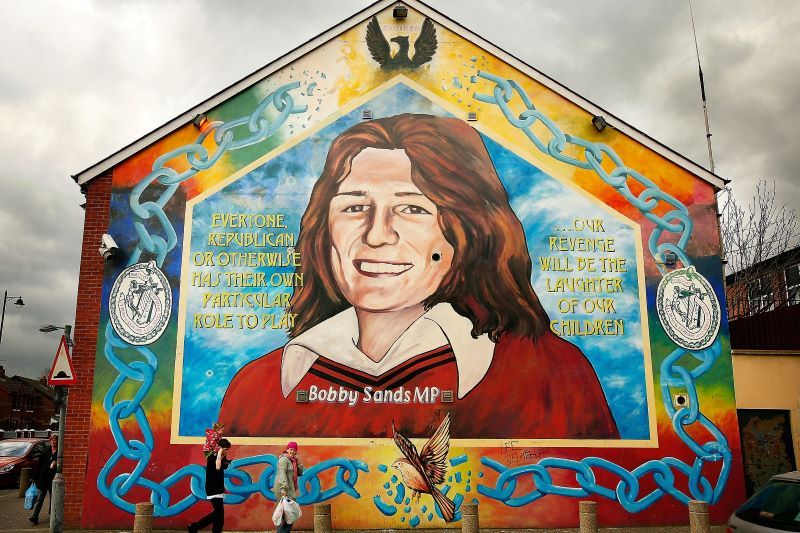
That brings us to 1983. The Nationalist prisoners deeply resented the prison system and wanted to continue to undermine the authority of the British Government and began to plot what would become the largest mass breakout in the history of Ireland and the United Kingdom.
The Plot
Prisoner and IRA member Larry Marley was selected to lead the escape. He had some experience with escapes and seemed to be the perfect choice for the job. In 1975, he and nine other IRA men escaped from a courthouse in the town of Newry. He was recaptured in 1977. Then, in 1978, he nearly escaped Maze prison while dressed as a prison warden, but was captured before reaching the prison perimeter. After this failed attempt, he then joined the blanket protests for the next four years. But he had not given up on escaping the Maze.
Marley was aided by a number of other Nationalists, including Bobby Storey, Gerry Kelly, and Brendan McFarlene. There was an escape officer selected from each block, as well as intelligence officers who would try to learn as much about the layout of the prison as possible. Those involved in the attempt were also only told exactly what they needed to know, so that very few people knew the entire plan.
Their first priority was to learn about the prison and its structure. Though they had been imprisoned there, many of them had no idea how the prison actually looked from the outside. One inmate recalls how the wardens were careful never to reveal the layout of the prison to the prisoners. They would refer to the prison officers as screws:
“It was a very large camp and when the screws would move you from one place to another, they would move you in blacked-out vans. They had a policy of providing you with a most limited view of the jail.”
In this way, the prisoners had no idea where they were positioned in the Maze. Visiting family members started to smuggle in aerial photographs that had been taken by the media as well as ordnance survey maps.
The most important part of this break out attempt was the prison officers themselves. It was very important to understand the prison officers and build comradery with them, so as to establish their weaknesses. During the years of blanket protests, dirty protests, and hunger strikes, there had been a deep-seated hatred between prison officers and prisoners. To make the escape possible, the IRA had to change that.
Prisoners began calling the officers by their first names and trying to take the tension out of the relationship between prisoner and guard. Some Nationalists found this very difficult and had a hard time treating the officers as equals, as the Hunger Strike had just taken place two years prior, but gradually the plan began to work. According to some of the inmates in there, the officers began to believe that they had ‘broken’ them. Other officers remained suspicious and were reluctant to let their guard down. Some of the prisoners also began working as orderlies, where they would sweep and polish the floor so that they could get access to different parts of the prison.
The prisoners would talk about football to the guards, and make them tea. As they engaged in idle chit chat, the guards would reveal small bits of information about the prison, shift changes, when it's busy, and so on.
The orderlies soon found themselves positioned in places they shouldn’t be, such as the control room of H7 block, in full view of the security camera feeds. They would clean and polish the area while learning information which would help in the eventual escape. Though the door to this area was meant to remain closed and padlocked, the officers left it open as it would let fresh air into the room and because they didn’t feel as threatened by the prisoners.
The prisoners planned each stage of their escape, diagrams were made showing the different alarm points around the prison, where guards could raise the alarm. The plan had to be perfect as it would be shown to the IRA on the outside, who would approve it. If they weren't happy with any aspect of the escape, they could call it off. Once the plan was approved, the IRA then set about smuggling guns into the prison.
The prisoners needed the guards to immediately surrender and the only way to do that would be by using guns. Six handguns were smuggled into the prison and to this day, the IRA has not revealed exactly how they managed to get them in.
By this stage, they had planned how to take control of the H7 Block but then needed to figure out how to get out of the rest of Maze Prison. It was incredibly secure, with long high fences and many layers between the inmates and the exit. There was no chance of scaling the fences or digging under them. There was also an armed British soldier stationed at a watchtower by the main gate.
The prisoners eventually focused their efforts on the transport that had been coming in and out of the prison, in particular the prison food truck. It traveled in and out of the Maze but also to each and every block in the prison. The prisoners also found out that the truck wasn't searched as it entered or exited the compound. The guards at the gate knew the driver's face and never felt the need to search the vehicle. Now they just needed to figure out how to take control of it.
After months of preparation, the prisoners had amassed a huge amount of information. They knew how to take over a block and how to secure it without the alarm going off. They also knew what time the food lorry arrived at, and were confident that they could hijack it and hide in the back. They also knew that the lorry would not be searched. On the 25th of September 1983, the plan was in motion.
Capturing H Block
It was a Sunday afternoon which was a deliberate choice by the inmates. Inmate Brendan McFarlane recalls:
“The reason we chose a Sunday was because Sunday is a closed day. There's no visits, there's no movement inside the prison, other than food lorries up and down. Or somebody going to hospital. There's no workshops, there's no football, there's nothing. You observe Sunday like a religious day almost. Therefore they do not also need the same amount of staff as they would on a normal working day."
The day began with McFarlene covertly taking the names of all the officers in the block. The prisoners needed 12 officers' uniforms to pull off this escape attempt, and needed to match the prisoner with the officer whose clothes they would steal.
The code word for the beginning of the operation was ‘Bumper,’ which was the machine used to polish the floors. Once the prisoners heard McFarlene shouting for this, then the attempt was on.
Once this was shouted, a 90-second countdown began, beginning with the group silently capturing four officers who were gathered in one room. When discussing the level of aggression they would use the group decided to use extreme verbal aggression, which would hopefully prevent them from having to use the firearms. This escape attempt was as much about portraying the IRA in a positive light, as it was getting the inmates out of the prison, and if they were to kill officers, it would tarnish their portrayal in the media. They were prepared to do it, but they were trying to avoid it.
Bobby Storey then entered the room with four prison officers. He and another prisoner then produced the guns and pointed them at the heads of the officers, but while also being quiet, so as not to alert other officers outside. They demanded that the officers get down on the ground. Storey held his gun up and cocked it to prove it was real.
There were still 17 more officers scattered around H Block that needed to be dealt with. And they all had to be taken simultaneously, or as close as possible. Everything during this attempt operated on line of sight, so once one officer was taken, then that was the cue for the prisoner down the hall to take the next one. But the most important job of all was getting to the officer in the control room.
The officer would sit at the controls beside an intercom, a panic button, a radio, and a telephone. Prison Officer John Adams was assigned to the control room. This was a problem for the inmates, as Adams was one of the officers they believed would create difficulty if they tried to overpower him. Another problem was that there was a metal bar door between the prisoners and Adams.
Gerry Kelly approached Adams and pointed a gun through the bars at him and said:
“Dont f****** move. Get on the ground. This is an IRA operation. If you move I’ll shoot. If you do what I tell, you won’t be hurt. If anybody phones here you ask him what the problem is, you then take 30 seconds and whatever the problem is you go back to him and say ‘look that's been sorted’.
Adams then said, “What if they don’t believe me?" To which Kelly responded, “You make them believe you.”
At this point, the prisoners were then surprised by a prison officer who came out of the ladies' toilets. He was quickly overpowered but Adams used this distraction to try and raise the alarm. Kelly responded by firing two shots at Adams. One of them hit Adams above the eye and knocked him unconscious. He woke up 30 seconds later and had a conversation with Kelly who said, what did you do that for? Adams responded saying he didn't know. He was bleeding heavily at this point but ultimately survived the attack.
All the officers who were captured were then brought into a classroom, with their hands tied behind their backs and pillowcases placed on their heads. 12 of them were stripped and the prisoners put on their uniforms. The prisoners then read a statement saying:
“This is an IRA operation. We’re not here from revenge or to punish you over the hunger strikes but if you interfere with the escape, you will be dealt with swiftly.”
By 2:50 in the afternoon, H7 was now completely controlled by the IRA in an operation that took 20 minutes. But they were not free yet, they still had a long way to go to get out of Maze Prison.
Lorry Escape
30 minutes later, David McLoughlin arrived in the food delivery truck that the prisoners needed for the escape. McLoughlin was essential for the escape because the officers recognized his face coming in and out of the prison. He was captured and held at gunpoint. Bobby Storey then said to him:
“This block is now in the hands of the IRA. All screws who obeyed our orders are safe. One who didn’t was shot in the head. We will shoot anyone who endangers our planned escape, including you."
Bobby then motioned to Gerry Kelly and said to the driver:
“That man will remain with you throughout the escape. He is doing 30 years and he’ll shoot you without hesitation if he has to. He has nothing to lose."
37 prisoners were then loaded into the back of the food truck and Kelly climbed into the footwell beside the driver and kept a gun pointed at him. He also told the driver that there was a grenade under his seat that would explode if he tried anything. There wasn’t really a grenade, but seeing the prisoners with guns made this threat significantly more believable.
The lorry then began to drive away from H Block towards the exit route of the prison. They were three gates away from the outside world at this stage. They now had to try and take over the control room of the main gate, which was also known as the tally lodge. It was here that officers clocked in and out of their shifts. The plan was simple, take over the tally lodge and open the gate allowing the prisoners to escape. It was agreed that a number of prisoners would stay behind to watch the officers until the 38 had escaped.
Kelly’s role at this point was to stay with McLoughlin and make sure he didn’t drive away in the lorry. At one point Kelly asked him how much he earns to which McLoughlin responded "Not f****** enough."
12 prisoners disguised as officers went into the tally lodge and started to arrest the other officers. One of the officers recalls getting captured by the prisoners:
"I didn't know what to make of it. The last thing I thought of was the provos. Never thought they get the hell there. I seen a prisoner I recognised and I said to Keith, keep quiet this is the provos. Then my heart started and I thought I was gonna bust out of my chest." (Note, "the provos" is a slang term for the provisional IRA.)
The phone then started ringing in the tally lodge. The prisoners brought a senior officer over to the phone to answer it. They stood beside him with guns pointed at him and said “answer the phone. If you say a wrong word, it will be your last word.”
The emergency control room were the ones calling as an alarm had been triggered in the tally lodge and they wanted to make sure everything was ok. It turns out that there was a hidden alarm button under the television in the tally lodge that one of the hostages had pressed.
The senior officer just said it was a mistake and then the person in the emergency room told him to stop messing about and to reset the alarm.
There were now 24 officers arrested and only 12 prisoners holding them. The timing of the escape had been delayed, and the prisoners arrived at the tally lodge during a shift change where officers were arriving to clock in or out. Each was arrested as they arrived but the prisoners soon began to become overwhelmed with the number of officers they had to arrest. It wasn’t long before the officers began to start fighting back and the prisoners began to lose control of the tally lodge.
Outside, the main gate was opened, and most of the prisoners were still in the lorry, waiting for the ones in the tally lodge to join them. But two officers managed to wedge their cars in the gate, blocking the lorry from escaping. The back of the lorry was then opened and the prisoners all flooded out and began fighting with officers who had freed themselves. During the fighting, five officers were stabbed.
Above them was an armed British Soldier in a guard tower. He watched the entire scene unfold but didn’t know who to shoot, as many of the prisoners were dressed as officers. It later emerged that he believed that it was prison staff fighting each other.
The prisoners ran toward the final gate and climbed over it as the officers chased them. Some started shooting at the officers to hold them back to allow time for the rest to escape. One officer was shot in the leg as he chased the prisoners.
By 4:18, it was all over. The prison was secure once more. Three prisoners had been captured while trying to escape and 35 had breached the perimeter of the prison. This was the biggest prison escape in British and Irish history, and the biggest in Europe since World War Two.
Outside, there was a plan for an IRA convoy to meet and collect the members, but due to a miscalculation in timing, there was no one there, so the prisoners fled across fields, or hijacked passing cars.
The Aftermath
In the wake of the escape, 20 prison officers were injured. 13 were kicked or beaten, four were stabbed and two were shot. One officer, James Ferris, suffered a heart attack after being stabbed and died. A number of escapees were later tried for his murder but were eventually acquitted after the judge concluded that it could not be proved that the stabbing caused the heart attack which killed him.
The Army and RUC were quick to respond and within ten minutes of the prisoners escaping the prison, checkpoints were established around the prison and on some of the major roads in Northern Ireland.
Once the prisoners got outside of the prison it was every man for himself. Of the 35 escapees, 15 were recaptured on the same day.
Storey, McFarlene, and Kelly split into three teams. A number of cars were hijacked before they headed in different directions. Some headed towards the border to the Republic of Ireland and hoped to hide out across the border. Others avoided the roads completely and kept to the countryside, crossing rivers and fields.
Once they got to a safe house, some IRA members were given the option to move to America and assume new identities, while others were offered the chance to resume paramilitary activity.
Storey and a group of prisoners were eventually caught while hiding in a river and were brought back to the Maze. Kelly and his group made their way to a Nationalist Housing Estate in Lurgan, a town 14 miles away from Maze. They then hid out in an IRA weapons stash, which was a tiny crawl space between two floors. There, they would listen to updates about the escape on the radio. It was very tight, and they had to lie down at all times, and couldn’t even turn over without their shoulders hitting the floorboards. They were there for over 2 weeks.
McFarlene and his group broke into a house where they intended to hide out. There was a family in the house that were held hostage for a short while. When McFarlene and the group were leaving, the entire family swore on a bible that they would not call the police until 72 hours after the men left. The group then spent three days walking through fields to an IRA stronghold in South Armagh.
Two months after the escape, an escapee, Kieran Fleming, drowned while trying to escape from a SAS ambush, while in the process of planting a bomb. Another escapee, Ger McDonell, was arrested in Glasgow, during the arrest of the Brighton Hotel Bomber, Pat McGee, which has been covered in an earlier episode.
Kelly and McFarlene ended up spending months living in the Republic of Ireland. Then, in January 1984, they flew to mainland Europe using false passports. They then continued their work with the IRA, under these new identities, in mainland Europe. They were eventually arrested in the Netherlands and extradited back to the H Blocks in Northern Ireland in 1986.
Of the escapees, Gerard Fryers and Seamus Campell were never heard of again.
Politics
The escape made headlines around the world and was a major security embarrassment to the British Army. British Prime Margaret Thatcher made a statement saying “It is a very, very grave incident indeed. The most serious in our prison history."
The Governor of Maze Prison resigned and an inquiry was commissioned called the Hennessy inquiry. Essentially the inquiry placed the blame on the prison staff as well as the overall design of the prison itself.
James Hennessey went on to say that the key weakness was in the main gate of the prison. The main gate was controlled by people in: "a rather, flimsy, wooden building, to which anyone could have access from inside the prison."
He also concluded that the control room in the centre of the H block was not operational as it should have been. The control room is where all the communication and monitoring equipment was in each block. It was designed in such a way that the officer went in there, then closed a bulletproof door, then closed a metal bar door. In this way, the control room should have been impenetrable. But, there was no air flowing into this room, and the officers said that conditions inside were impossible if they didn't leave the bulletproof door open. There was also a relaxed atmosphere with the prisoners, so they didn’t feel worried around them prior to the escape.
Maze Prison eventually closed its doors after the Good Friday Agreement was signed in 1998 and in the two years following the agreement, 428 prisoners were released.
Now the site lies derelict and there are still some small sections of the prison visible but most has been demolished. There were plans for a peace centre to be built on the site, but it is unlikely this will go ahead after disagreements between Sinn Féin and the DUP. Part of the site is now known as Balmoral Park which is an outdoor events venue.
Irish Republicans refer to the escape as the Great Escape and it was a major morale boost for the IRA at the time. Though mastermind Larry Marley planned the escape, he stayed behind on the day, because his release date was coming up soon. Marley was released in 1986 and was shot dead by the UVF less than a year later.
Be sure to check out The Troubles Podcast for more stories from this period. The first ten episodes are already out and deal with the following:
- The Shankill Butchers
- The Assassination of Loud Louis Mountbatten
- The Brighton Hotel Bombing
- The Birmingham Pub Bombing
- The Omagh Bombing
- Bloody Sunday
- The Miami Showband Massacre
* This article was originally published in 2020, updated in 2025.
This article was submitted to the IrishCentral contributors network by a member of the global Irish community. To become an IrishCentral contributor click here.
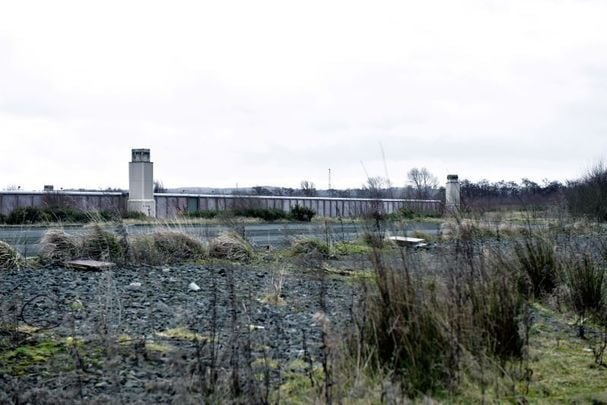
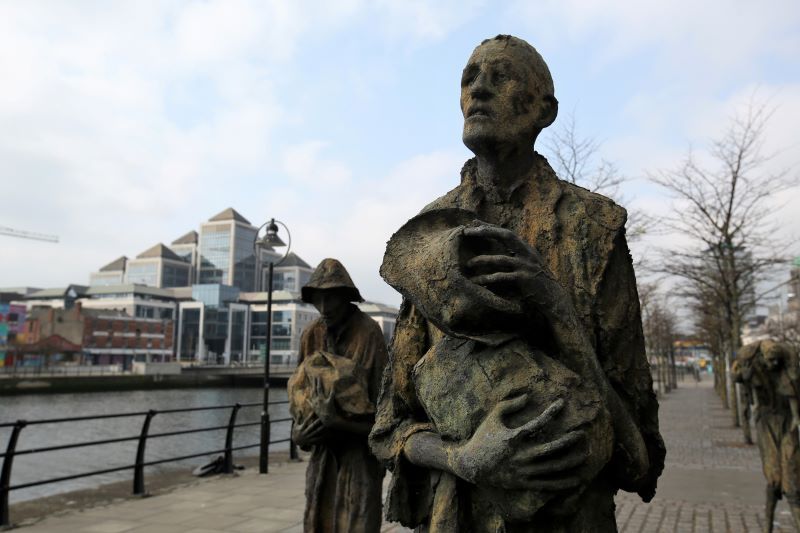
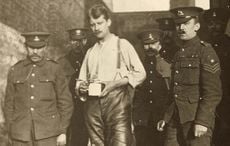
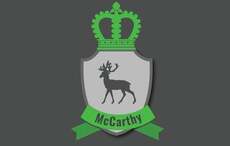
Comments